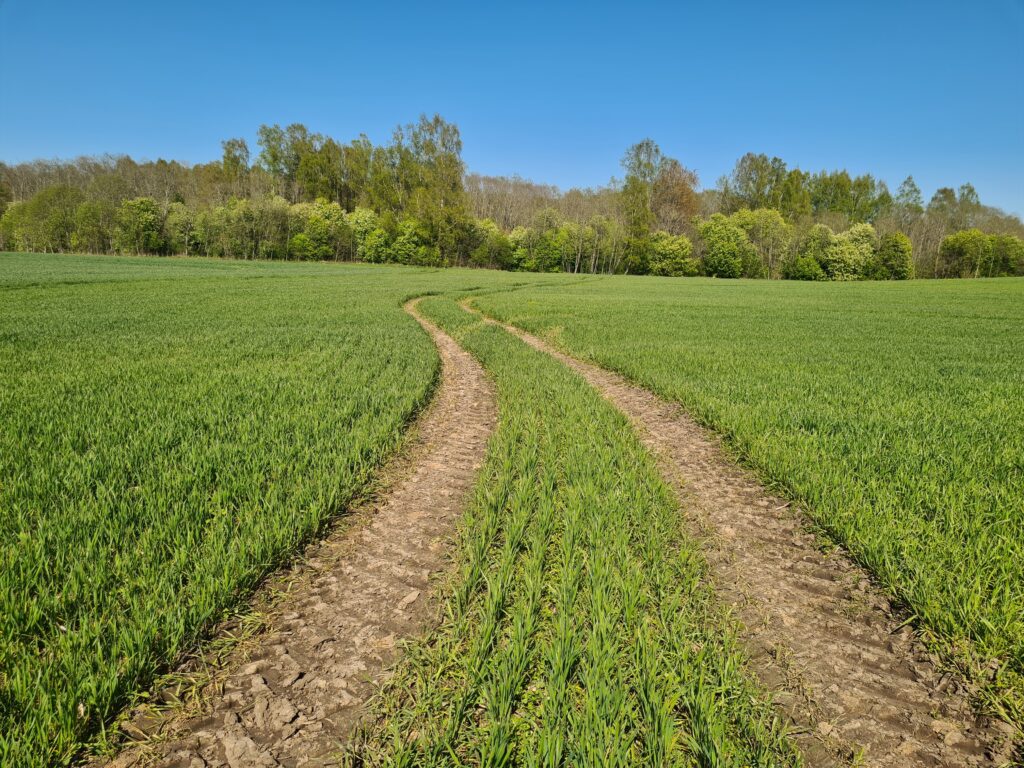Taking into account the experience of the previous year, the updated rules for the administration and control of the application and direct payments of support for agricultural land and other areas and farm animals (TI rules) were approved by order of the Minister of Agriculture.
Basic payment requirements
Lithuanian Agriculture and Rural Development 2023-2027. the strategic plan (SP) foresees the following types of direct payments: basic payment, redistributive payment, young farmer payment, coupled support and ecological system (ecoscheme) payment.
“Direct payments are linked to management requirements and Good Agricultural and Environmental Status (GAEB) standards that farmers must meet.” These requirements are the basis for the applicant to apply for TI”, emphasizes Artiom Volkov, chief advisor of the Department of European Union Affairs and Support Policy of the Ministry of Agriculture (MAA).
SP provides for nine GAAB standards, which are linked to the individuality of each farm. Some of them have been changed based on the experience of last year. “Good news for farmers – there will be no need for 2024 to restore perennial meadows”, notes the interviewer.
The procedure for managing meadows has been changed – grass mulching is allowed for all applicants, regardless of the number of contractual animals they keep.
In addition, pumpkin growers will be able to apply for linked support for vegetables, but if a total area of 1 ha or more of pumpkins is declared, it is necessary to “NMA agro” app to provide photos from several different places of each field, where the pumpkin crop can be seen.
According to the updated rules, the permissible limit applied to an active farmer has been reduced, according to which economic entities that received no more than EUR 2,000 (it was EUR 5,000) of direct payments for the previous year are automatically considered active farmers, that is, without evaluating their compliance with the “active farmer” criteria.
Changes for those who choose to participate in ecological systems
“One of the more important SP changes affecting the changes in TI rules, especially for those who choose to participate in the activities “Crop rotation”, “Catch crops”, “Use of certified seed”, “Non-arable conservation agriculture technologies”, the Efficiency and Effectiveness Methodology applies to these applicants . From now on, according to it, it will be possible to participate in at least one of the mentioned activities (until now it was mandatory to choose at least 2 such activities) and it is mandatory to choose at least one non-productive activity (the list of these activities has been expanded (“Maintenance of landscape elements”, “Strips of short-lived woody plants”, ” Perennial grass strips”, ecological systems “Replacement of arable peatlands with grasslands”, “Replacement of eroded land with grasslands”, continuous measures of the Lithuanian rural development program 2014-2020 “Agrarian environment protection and climate” activities “Maintenance of the slopes of reclamation ditches”, “Woody plants or perennials grass strips or fields on arable land”), which also includes green fallow) and additionally allocate at least 1 percent to it. area of arable land (in addition to the area of declared arable land that must be allocated according to GAAB 8).
The same conditions apply to organic farmers,” emphasizes A. Volkov, chief advisor of the Department.
According to the provisions of the Efficiency and Effectiveness Methodology, at least 1 percent shall be additionally allocated. the area of declared arable land is not required if one of the 5 alternatives is implemented. In addition, the TI rules specify the conditions under which the Efficiency and Effectiveness Methodology does not apply.
ŽűM, following the experience of the 2023 declaration, reduced part of the requirements for ecological systems and specified payments. Separate amounts of payments have been set for those participating in the eco-scheme “Interim crops” – for intermediate crops during the winter (139 EUR per ha) and for sowing or seeding (50 EUR per ha). For those participating in the eco-scheme “No-till sustainable farming technologies” – for the use of direct sowing (66 EUR per ha) and for the use of other tillage methods with no-till technologies (20 EUR per ha). If those participating in the latter eco-scheme choose the direct seeding method, they will make a 2-year commitment, while those who choose other no-till technology tillage methods will make a 1-year commitment.
For those participating in the eco-scheme “Maintenance of Landscape Elements” and planning to establish new grassy landscape elements (“hedgehogs (border strips), hedgerows” and “shores of surface water bodies, including protection strips, ditches”), a higher payment is provided – 206 EUR per ha (it was 157 EUR per ha).
When participating in the eco-schemes “Plant rotation”, “Catch crops”, “Use of certified seeds”, “Non-arable sustainable farming technologies”, when an area of more than 300 ha is declared separately according to each of the eco-schemes, 100% is allocated for the area up to 300 ha. payments, and for the area exceeding 300 ha – 85 percent. ecoscheme benefits. The same conditions apply to organic farmers.
It is also important to mention that, compared to last year, payments for organic farmers are increasing by about 15-16 percent. In more detail, all information is provided in the TI rules, which were approved in 2024. March 15 By order of the Minister of Agriculture no. 3D-217, in the rules of organic farming, which were approved on March 18, 2024. By order of the Minister of Agriculture no. 3D-219 and on the website of the Ministry of Agriculture.
For those who have chosen to participate in the eco-schemes “Extensive management of perennial grasslands with livestock grazing” and “Management of natural grasslands, wetlands and species habitats of EC importance” or “Extensive wetland management”, the minimum grazing intensity limit for contractual livestock has been reduced from 0.3 contractual livestock (SG)/ha to 0 ,1 SG/ha. The maximum grazing intensity cannot exceed 1 SG/ha.
The commitment periods are changing
It is also important to note that participating in some eco-schemes from 2024 the commitment period is also changed. Applicants may (but do not have to) terminate the previous (2023) commitment period and from 2024 undertake a new commitment period. Those who have just started to implement eco-schemes assume only new commitment periods, – continued the interlocutor A. Volkov.
From 2024 a shorter commitment period of 2 years is established (it was 5 years) for those participating in the eco-scheme “Extensive wetland management”.
For those participating in the eco-schemes “Perennial grass strips”, “Maintenance of landscape elements” (only those who establish and/or maintain grassy landscape elements) from 2024. a 5-year commitment period is established (it was 3 years). It is also important that the areas do not have to become perennial meadows at the end of the 5-year commitment period, the applicant decides this himself.
This year, a new eco-scheme “Replacing arable land with meadows” appeared, which includes two activities “Replacing arable land with perennial meadows” (support is provided for the conversion of arable land areas to perennial meadows) and “Maintenance and care of perennial meadows” (support is provided for the maintenance of perennial meadows and their maintenance). For those who chose to turn arable land into perennial meadows, the payment is EUR 202 per ha, and for the maintenance and care of perennial meadows – EUR 72.70 per ha.
for No. 2024/07

#updated #rules #direct #payments #approved
– 2024-03-29 02:33:23


